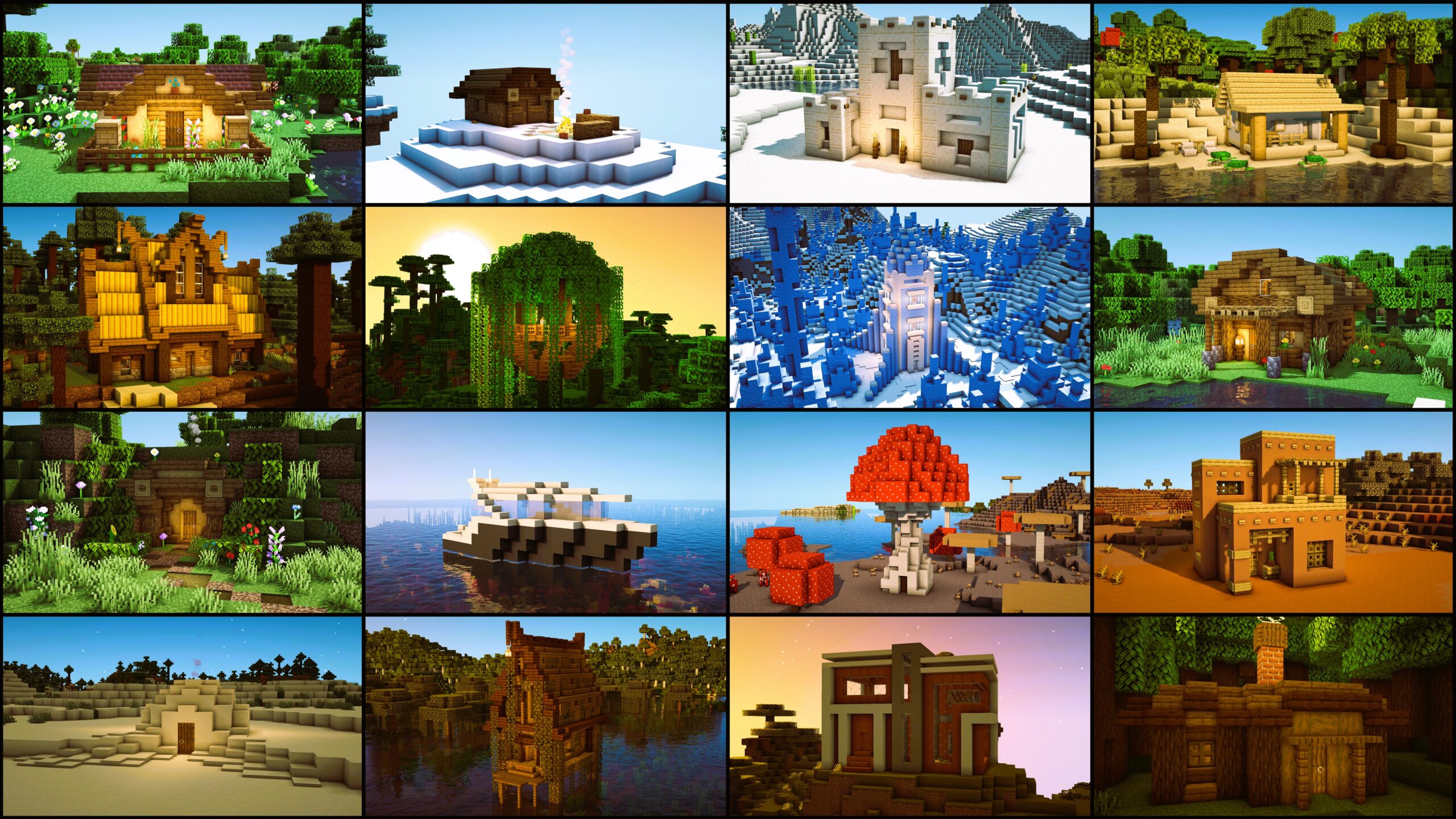Minecraft, the iconic sandbox game developed by Mojang, offers players a vast and diverse world to explore and create within. One of the key elements that contribute to this diversity is the presence of biomes, distinct ecological regions with unique characteristics. From the snowy landscapes of Taiga to the vibrant coral reefs of the Ocean biome, each area poses its own set of challenges and opportunities for builders. In this article, we will delve into the art of Minecraft building with biomes, exploring how players can adapt their designs to seamlessly integrate with different environments.
Understanding Biomes in Minecraft
In Minecraft, biomes are specific regions with their own climate, flora, and fauna. The game currently features a wide range of biomes, each with its own set of environmental features. These can include temperature, precipitation, terrain types, and unique structures. Some well-known biomes include the Forest, Desert, Jungle, and the elusive Mushroom Fields. Each biome not only provides a visually distinct experience but also influences gameplay mechanics, making it crucial for players to adapt their building strategies accordingly.
Adapting Architecture to Biome Characteristics

When embarking on a building project in Minecraft, players should consider the characteristics of the biome they have chosen as their canvas. For example, in a snowy Taiga biome, builders might want to incorporate materials like spruce wood and snow blocks to create structures that blend seamlessly with the environment. Similarly, a desert biome may inspire the use of sandstone and terracotta to evoke a sense of harmony with the surroundings.
Furthermore, understanding the natural elements of each biome is essential. For instance, builders in a Jungle biome may want to incorporate tall trees and lush vegetation into their designs, while those in a Mesa biome might focus on utilizing the unique colored clay and rock formations to enhance the aesthetic appeal. Construction of futuristic buildings and cities, more details in the article called Sci-fi Minecraft.
Landscaping and Terrain Integration
Building in harmony with the natural landscape is a key aspect of Minecraft construction. Players can elevate their creations by adapting their structures to the terrain, whether it’s the rolling hills of a Plains biome or the towering cliffs of an Extreme Hills biome. This integration not only enhances the visual appeal of the build but also makes it feel more immersive within the given biome.
Consideration should be given to the elevation, water bodies, and natural features present in the chosen biome. In aquatic biomes like the Ocean or River, incorporating docks, bridges, or underwater elements can add depth and realism to the build. Similarly, builders in mountainous biomes might opt for elevated structures and cliffside dwellings to maximize the natural terrain.
Functionality and Practicality
Beyond aesthetics, builders should also consider the functionality of their creations in relation to the biome. For example, constructing a cozy cabin with a fireplace in a snowy biome not only enhances the thematic elements but also serves a practical purpose by providing warmth. In contrast, a structure in a hot Desert biome might benefit from open designs that promote airflow and ventilation.
Understanding the practical needs of the environment can lead to more immersive and purposeful builds. Whether it’s creating farms in fertile Plains biomes or utilizing the natural light in the Sky biome, adapting functionality to biome-specific characteristics can enhance the overall gaming experience.
Challenges and Rewards of Biome-specific Building
Building with biomes in mind presents its own set of challenges and rewards. Adapting to the harsh conditions of a Mesa biome, where resources may be limited, can be a rewarding experience as builders overcome obstacles and showcase their creativity. On the other hand, lush biomes like the Flower Forest offer a plethora of vibrant colors and natural elements to incorporate into designs.

Exploring and conquering the challenges posed by different biomes can be a source of inspiration for builders, pushing them to think outside the box and experiment with new materials and architectural styles.
Conclusion
Minecraft’s diverse biomes provide players with a canvas for endless creativity. Whether you’re constructing a medieval castle in a Forest biome or a futuristic city in a Mesa, adapting your designs to different environments is a rewarding aspect of the game. By considering biome-specific characteristics, integrating with the natural landscape, and prioritizing functionality, builders can create immersive and visually stunning structures that stand out in the vast world of Minecraft.
For more information on Minecraft biomes and building strategies, you can visit the Minecraft Wiki for comprehensive guides and community insights.
Remember, the beauty of Minecraft lies in the limitless possibilities, and embracing the challenge of building with biomes adds a dynamic and engaging layer to the game. Happy building!

